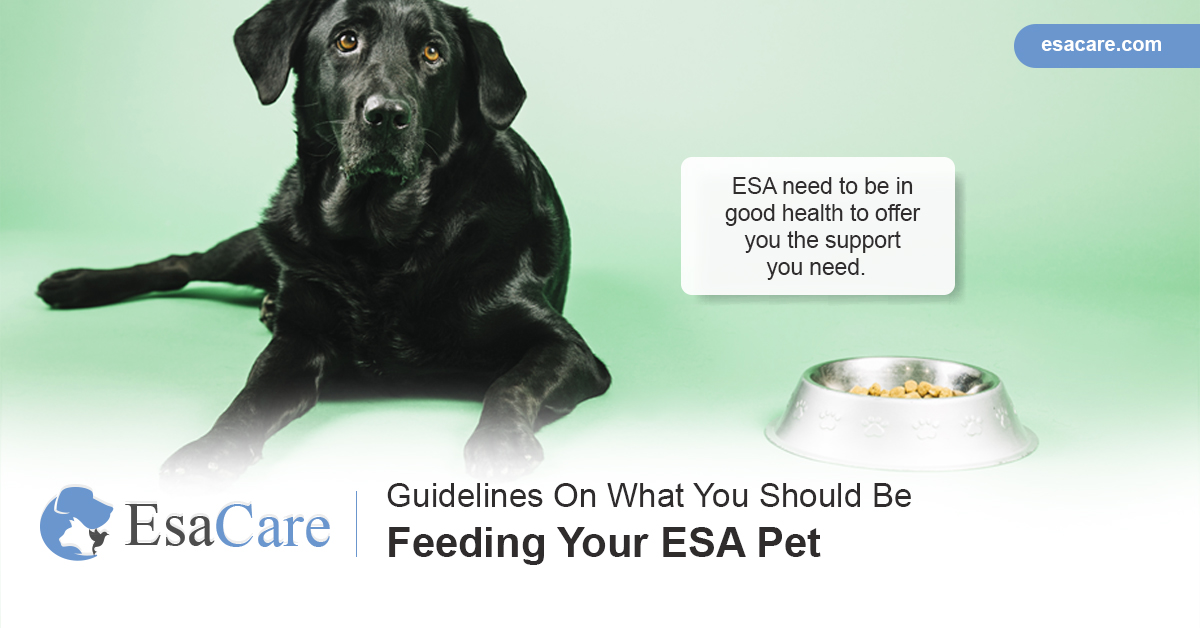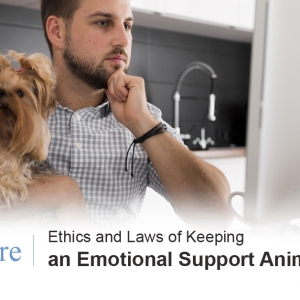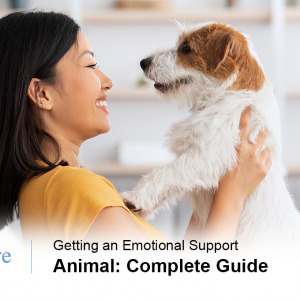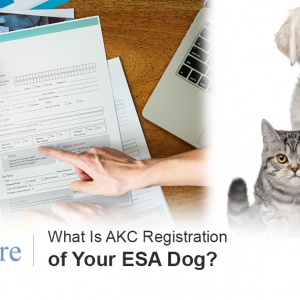Guidelines on what you should be feeding your ESA Pet
Emotional support animals come in different kinds, from standard options like dogs and cats to the not very common but still popular options like hamsters, horses, birds, and rabbits.
Emotional support animals have been shown to have a significant positive effect on calming and making patients feel comfortable and safe. It also helps in increasing self-esteem and offers patients a sense of purpose.
Stay Healthy with your ESA Pet!
With such a critical role in your well-being, taking care of your pet, especially its diet, is essential. The right food allows your pet to meet its nutritional requirements, which will enable it to serve you better.
Here Are Five Essential Guidelines on What You Should Be Feeding Your ESA Pet
1. Find out the individual pet nutritional needs
Like you, pets have specific nutritional needs across the species. While they may have general needs cutting across the species, such as the need for Vitamin A, how they acquire and process it is different.
Dog and most other ESA pets can convert Vitamin A from leafy vegetables, while cats can only use Vitamin A from animal meat. These differences are present in several other nutrients and minerals.

Benefits of ESAs
There are also metabolic and physiological differences to be considered, which differ with different species. Even in the same species, the pets’ size and age are factors that will determine the nutritional needs of the pets. Senior pets will have a higher demand for fiber, while animals that can put on weight faster need lesser calories in their diet.
2. All your pets need essential minerals
Any pet needs the primary minerals for proper body functioning at the cell level, maintaining body structure, providing electrolyte balance, and helping in nerve conduction, among other things. There are both macro and micronutrients, and they are equally essential.
The difference is that the first category, which includes minerals like calcium and phosphorus, are found in the diet in large quantities, while the micro ones like Zinc, manganese, and iodine may have to be added.
The mineral portions are crucial depending on the pet and factors like age, size, and current health. Ensure the meals provide the recommended daily intake as advised by your vet.
3. Provide enough water for your pets
In all the talk about food, it is easy to forget that pets need water more frequently than you assume. While some foods like leafy vegetables and fruits may contain water content, your pets cannot survive long without water.
Keep your self engaged with your ESA Pet!
Even when there is a deficiency, it significantly affects their well-being, and they reduce their activity as the body tries to conserve the little water present.
Water provides the pets with a medium for most bodily processes like digestion and absorption, transportation of nutrients and other matter in the body, and the excretion of waste products from the body.
An insufficient supply of clean water for any pet can prove fatal and may result in death or major health complications. The best way is to keep a sufficient amount of fresh water easily accessible by your pet and be on the lookout for your pet’s water-drinking habits.
4. The meals should contain sufficient dietary fat
Depending on your pet, dietary fat can be obtained from seeds or animal tissues. Fats serve crucial roles in the body of your pet. In birds, for example, they help in egg size and hatchability.
In all pets, they help in ensuring healthy skin, feather, and fur growth, and also the absorption of specific vitamins like D, E, and K.

The right food for ESA
Fats are also a rich source of energy, and they help insulate your pet’s body. They are also crucial in the production of certain hormones and help protect the essential organs. For cats and dogs, fats are also used to make their food palatable. However, care has to be taken to prevent excessive fat use since it can easily lead to overweight and obese animals.
5. Use foods rich in amino acid/proteins
Another vital nutrition you should not forget is proteins. The number of proteins needed by your pet will depend on its species, size, and activity, among other things. Proteins perform several roles, including muscle growth, tissue repair and maintenance, and enzyme and hormone formation.
All animals require a supply of 22 essential amino acids, which are the building blocks for proteins. Animal sourced protein is of higher quality than plant proteins.
As such, you will have to use various plant protein sources to ensure your bird and herbivorous pets get an acceptable range of the essential amino acids.
Care should be taken with the number of proteins given to pets to avoid developing other health complications and harming body organs like the kidney and liver.
Avoid fake ESA letters – click below to get an authentic ESA letter now!
With the varied information online and from pet food manufacturers, it can be hard to cut through the noise to establish the truth. At EsaCare, we understand the importance of your ESA pet to you.
We will help you obtain the needed ESA letter, and also help you with all the information you need to keep your beloved pet in a healthy state.
Contact us today and let us assist you and your pet.











 347 5th Ave Suite 1402-112,
347 5th Ave Suite 1402-112,

Leave a Reply
Want to join the discussion?Feel free to contribute!